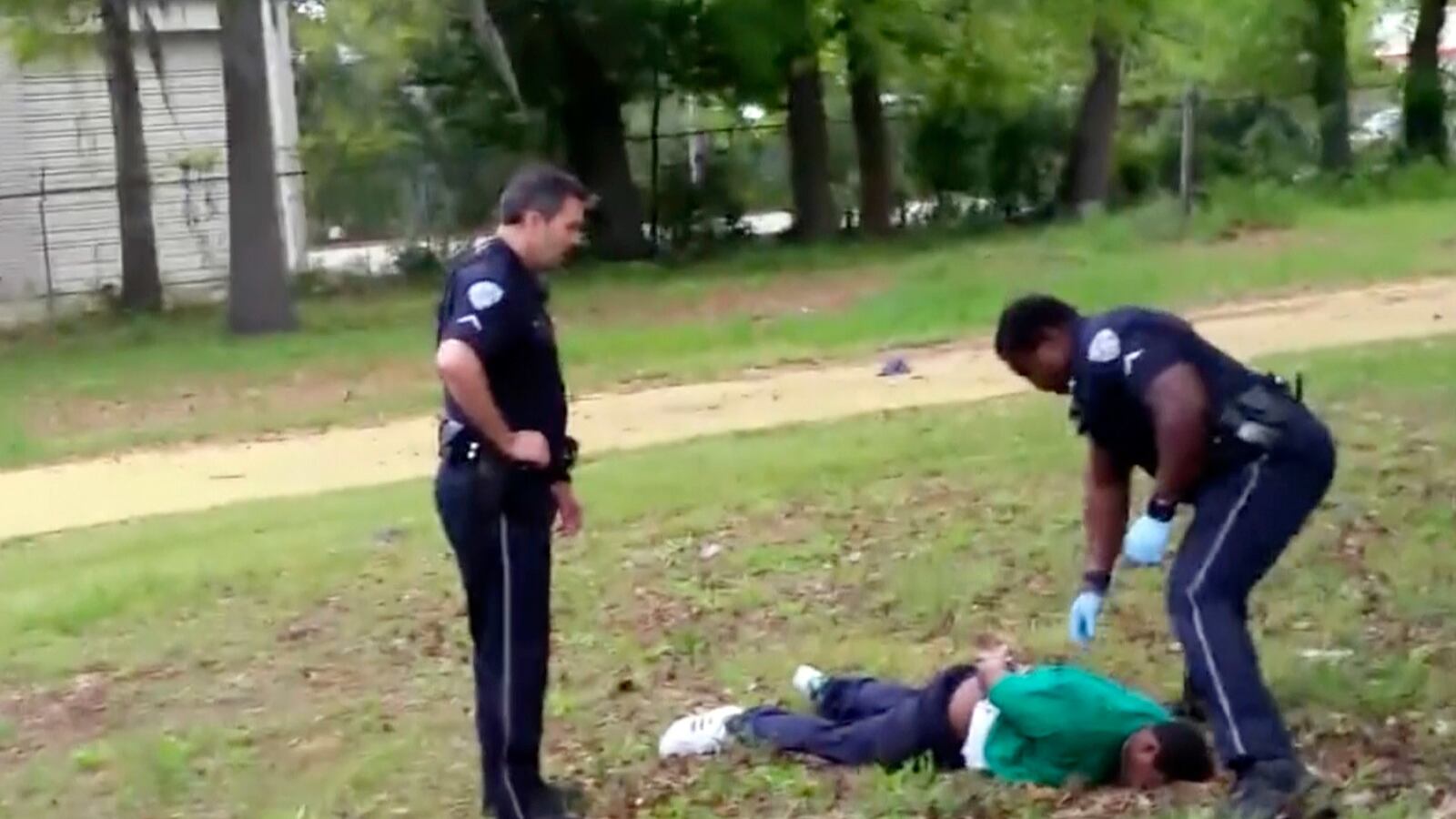CHARLESTON — If Feidin Santana hadn’t overslept on April 4, 2015, he’d likely be home in the Dominican Republic, enjoying time with his family.
Instead, he spent Friday testifying in a courtroom in Charleston, South Carolina, describing how he came to famously film a police officer shooting an unarmed suspect in the back.
Santana was called as a witness by prosecutors seeking to convict former North Charleston policeman Michael Slager of the murder of 50-year-old Walter Scott.
Slager had pulled Scott’s vehicle over for a broken taillight in April 2015. Scott soon fled the vehicle, initiating a chase that ended with Slager firing five bullets into Mr. Scott, who crumpled to the ground and died.
Slager claimed Scott had grabbed his Taser and that he shot the suspect in self-defense. But days later Santana released a video of the shooting, prompting much public outrage and leading to Slager’s firing from the police department and his arrest for murder.
On the stand Friday, Santana explained that he was overdue for work at a barbershop the morning he overslept. Despite his tardiness, he strayed from the most direct route to work, unwilling to walk along a busy highway, preferring to listen to music and exercise a bit. His choice of this route was fateful, as he soon saw Scott and Slager running toward him before turning into an empty lot.
He followed the men, rediscovering them both on the ground, scuffling. Slager was on top of Scott and punching the suspect, said Santana, and he could hear an “electric sound” that he later learned was from the use of a police Taser. Scott then got up “aggressively” and shook himself free of Slager’s grip, said Santana, before turning to run.
Santana filmed a final portion of this struggle as well as Slager then firing eight shots at Scott, who was running away from the officer.
“It’s something I will never forget,” said Santana. “It’s something I didn’t expect.”
Defense attorney Andy Savage questioned Santana’s perspective and recollection of events, repeatedly referring to the encounter between Scott and Slager as a “fight.”
Santana took issue with this characterization, telling Savage that he understood a fight to be some kind of attack or altercation between two or more people.
“It wasn’t a fight,” said Santana, claiming he saw Scott only trying to flee from Slager, never attacking him.
“He was trying to get away from the Taser I was hearing,” said Santana.
“It was an injustice what I saw,” he later added.
Santana also described at great length his deliberation over what to do with the video in the days after he witnessed and filmed the fatal encounter, reluctant to be dragged into a criminal case. Initially believing Scott had possibly survived the encounter, Santana said he was later dismayed to learn Scott had died and that media reports were indicating Slager claimed to have fired his weapon in self defense.
Scared for his safety and distrustful of the police, he obtained an attorney before releasing the video to the media and allowing himself to be interviewed by major news networks in New York City.
“I’m showing the other side of the story. I’m showing the truth,” he said in court Friday, believing his video contradicted the existing record of what had allegedly occurred between Scott and Slager.
Santana subsequently profited from the sale of the video and received financial donations solicited over the Internet on his behalf.
The defense questioned Santana’s motivation for releasing the video to the media instead of to a law enforcement organization, making conspicuous mention of the money Santana made and the many news outlets he visited in New York. Santana insisted his actions were determined by his fear for his safety. Public exposure, he reasoned, would help protect him.
Santana was 23 when he filmed the police shooting, living a limited existence in a gritty section of North Charleston, a community with longstanding distrust between its black population and the police. He worked 14-hour days as an unlicensed barber at an unlicensed barber shop, he testified, making money to send to his wife and child in the Dominican Republic.
“My only routine was my home to my job, seven days a week,” said Santana, a former baseball player who also enjoys writing music.
Defense attorney Savage noted that six months prior to the shooting, Santana had penned song lyrics with an anti-police bent, including:
It’s all war, trouble, police abuse, and those who must defend us are the worst criminals, who can I trust? Tell me.
When confronted with this writing, a feisty Santana declared to the prominent defense attorney that he harbored no ill will to policemen themselves.
“I am against police brutality,” said Santana. “I don’t tolerate injustice.”
Now living in the Dominican Republic again, Santana said he bought his own airplane tickets to return to Charleston to testify. As he had feared 18 months ago when deciding whether to publicize the video, his release of the footage guaranteed his presence in a South Carolina courtroom.
“My fear was to be here where I am today” said Santana. “My only wish was to be with my family in the Dominican Republic.”






